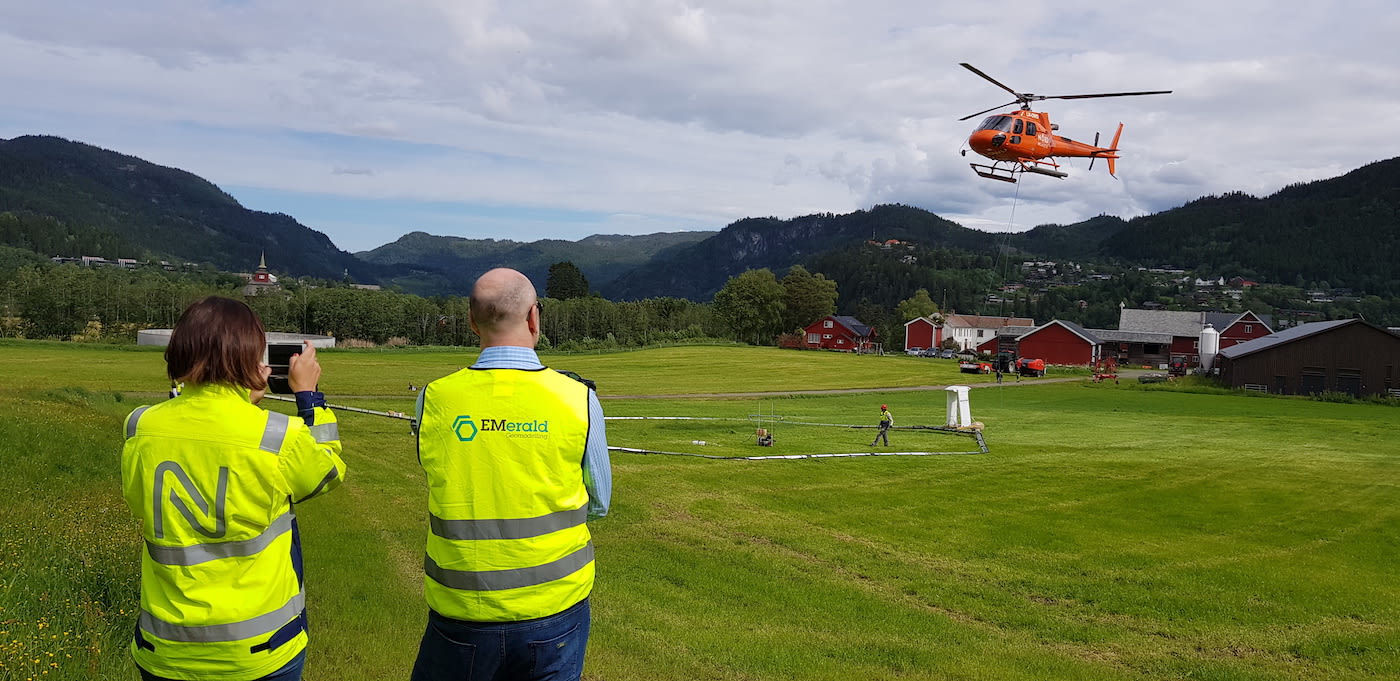
AI in geotechnical surveys provides major savings
By using EMerald Geomodelling's geoscanning surveys and machine learning algorithms on a road construction project near Trondheim, Norway, Nye Veier saved one year of geotechnical investigations and averted road construction costs equivalent to 250 million NOK.
Before building and designing this new highway between the villages Kvithammar and Åsen, Nye Veier, the project owner, needed to investigate the ground conditions. Before EMerald Geomodelling became involved, a few geotechnical investigations had been carried out.
Quicker and better overview
Geotechnical drillings are a time-consuming method for obtaining sufficient information about ground conditions where infrastructure is to be built. By using EMerald Geomodelling's technology and solution, it has been possible to cut this short drastically. EMerald Geomodelling works as a subcontractor for NGI, working closely with senior engineer Alf Kristian Lund.
- Some drilling is still necessary, but what we see is that by combining new technology with traditional solutions, you can more quickly get a better overview of the entire area of interest. Whereas drillings would have taken one year to get a sufficient overview, the geoscanning investigation in this project was carried out in just a few days, says Lund.
The great advantage of using an airborne methodology, such as by helicopter, is that you can collect data for large areas in short time. This is the main source of the savings in the project.
- In a normal project, large-scale, early-phase decisions we only have drillings available to us. The projects will then have a point-by-point data basis. In comparison, combining fewer strategic drillings with geoscanning provides a more comprehensive picture of the whole area early on in the project. This is revolutionary, says Lund.
This makes it possible to plan fewer strategic drillings to verify or better understand the modelled subsurface data.
3D-models show more realistic results
Using geoscanning and machine learning algorithms developed by EMerald Geomodelling, ground conditions in the areas between the limited boreholes were unveiled within two weeks after flying.
- The results revealed that the assumed depth to rock did not correspond with reality. The 3D-models showed that bedrock depressions were deeper than initially assumed. It is very expensive to build in such conditions. As a result, the planned route was moved early in the project, and we avoided building along a less optimal route. These savings are estimated to around 250 million NOK, says Lund.
The solution has made it possible to move important infrastructure out of geologically challenging areas. This benefits society, both in the form of better management of tax dollars and improved safety of the final road design.
- We appreciate the trust we have received from Nye Veier. A company like ours is completely dependent on players who dare to invest in new technology. It is comforting and motivating for both to be able to deliver such good results back, says Andi A. Pfaffhuber, CEO of EMerald Geomodelling.
Developing drone-based solution for the future
For over ten years, Andi A. Pfaffhuber led research on how to simplify the process of existing geotechnical ground investigations at NGI. To achieve this, it was necessary to increase the precision of the instruments and final model results significantly.
- We have now proven that it is possible, says Pfaffhuber. He says that EMerald Geomodelling is continuously working to develop the solution and that in the coming years they will work out a drone-based solution to make the offer available to more people at an appropriate price.
This has been achieved through the development of advanced machine learning algorithms. Geoscanning provides data that through processing can provide information about an entire area. Machine learning, which is a type of artificial intelligence, makes it possible to recognize and "remember" small variations in the data that are not obvious to the naked eye.
